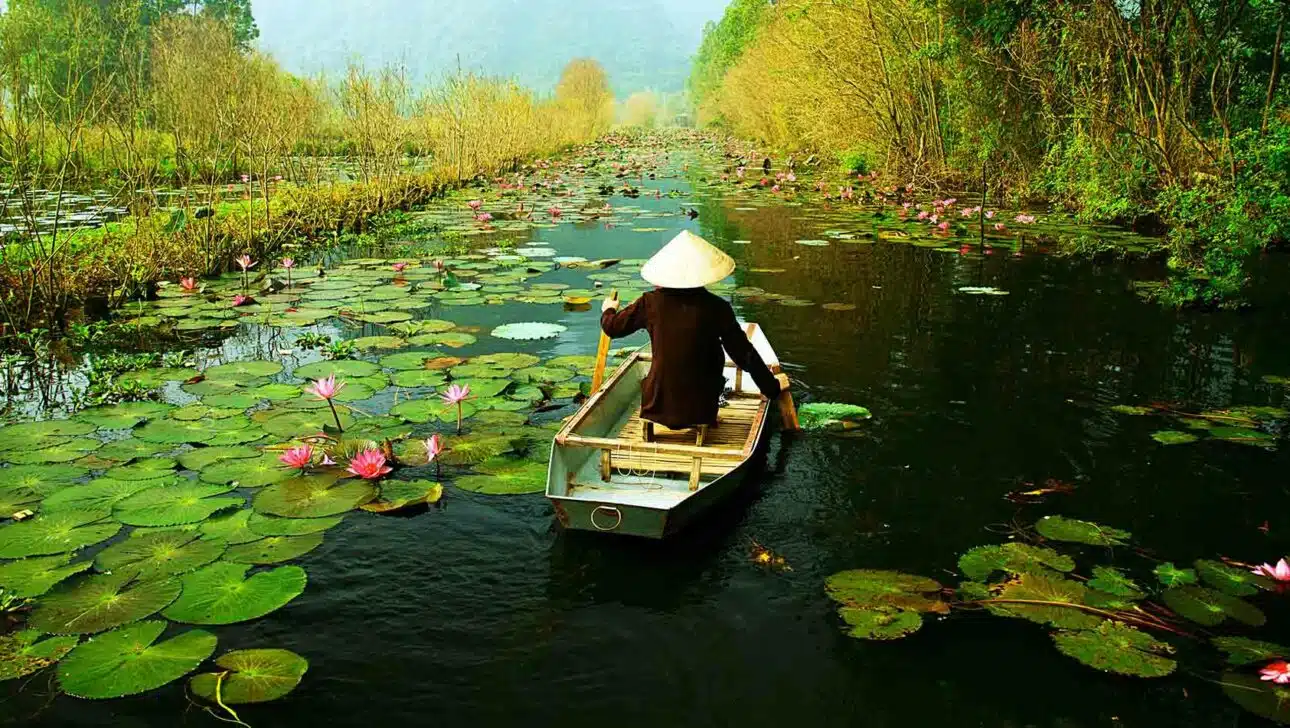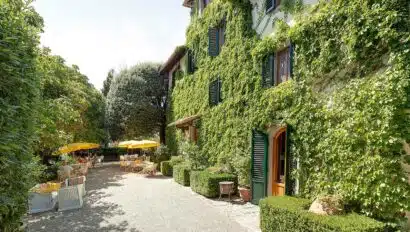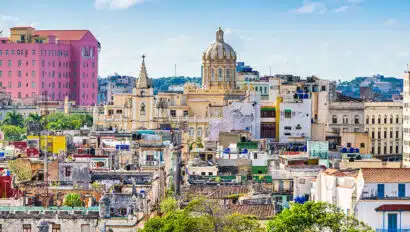Seek the roads—and rivers—less traveled to experience daily life in Vietnam, Laos and Cambodia.
Hours after arriving in Vietnam, I’m catapulted into the dazzling midafternoon sun and freewheeling Ho Chi Minh City traffic on a cyclo—the city’s ubiquitous pedal-powered rickshaws. Swarmed on all sides by buzzing motorbikes—the drivers of which seem to possess no sense of self-preservation—I relax my white-knuckle grip and melt into the fluid chaos of this well-choreographed street ballet, in which I now play a small role.
Thus began my all-consuming love affair with visiting Vietnam and the basis for what I tell people when they ask for travel tips for Vietnam. I spent nine years living and traveling in this vibrant country, and I made use of indigenous transportation whenever possible. Navigating Indochina from the seats of its low-tech vehicles—cyclos, bikes, long-tail boats, elephants or under the power of your own two feet—is the best, and often the only, way to encounter the region’s authentic soul. That’s why Classic Journeys’ cultural walking adventures and family journeys forgo motorized transport and paved roads whenever possible. My most earnest advice is that with no windshield or windows separating you from the environment or the people, you encounter everything from a native’s perspective.
BY BIKE
It’s best to leave city cycling to the pros, but in the less-frenetic countryside, you’re safe taking the reins—or handlebars. The meandering Mekong River sets the pace and you leisurely pedal along its banks, breathing fresh air and bantering with locals who ride alongside on their way to work or the local market. You’re greeted by kids who yell “xin chao,” and friendly local farmers like Mr. Hai Cu, who offers you a fresh sample from one of his fruit trees. When the road abruptly ends at the water’s edge, you hop aboard a long-tail boat or motorized sampan that carries you along the Mekong into timeless river life, which you’d miss traveling by road.
ON FOOT
Back on solid ground in the rural villages of Danang and Hoi An, take my advice -even a bicycle is too fast. Instead, you’ll follow a footpath through the rice fields, stopping to watch and get to know the local men and women stoop to plant or harvest the crop, and then you’ll visit a mill to see how the rice is dried and husked. If the locals seem especially excited to see you, it’s because foreigners rarely have the chance to see these rural pockets of the countryside.
BY BOAT
The gem of Vietnam’s waterways is Halong Bay, which reveals a fairytale-like tableau of more than 3,000 limestone karsts jutting out of the water. Vessels of every description ply these waters, and early mornings are a magical time. Board a luxury red-sailed boat, or junk, and enter the fray. Floating markets are a must-see, as slender long-tail boats weave alongside overloaded barges. Later, you’ll sail into a secluded pearl farm cove where you can paddle a kayak or take a swim in the emerald waters before enjoying a cooking lesson and lunch on deck.
BY ELEPHANT
Across the river is Luang Prabang, Laos. Life here centers around the river, which hums with perpetual activity. Narrow wooden boats propelled by outboard engines and old wooden houseboats cruise past hillsides dotted with monasteries and temples, fishermen throwing nets from pirogues, and water buffalo and laughing kids splashing about. In town, your local guide—who entered a Buddhist monastery as a boy—will take you to give alms to the monks who walk barefoot and silently through the streets.
Continuing on to Cambodia, you’ll explore on foot again—this time at the Angkor Thom and Angkor Wat temple complexes, the largest in the world. Draped in green foliage, the ruins still look much like they did when they were discovered. With these Indochina travel tips, this land on the opposite side of the world seems even more magical, but not quite so distant.




